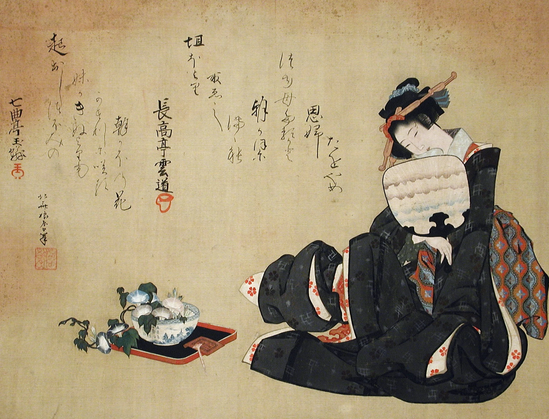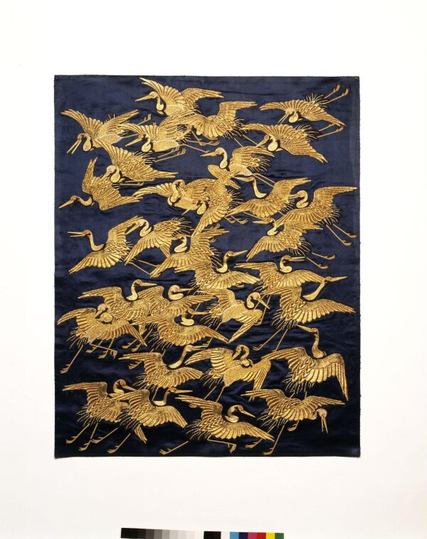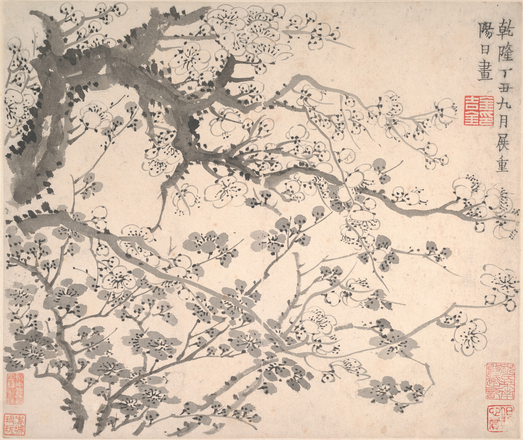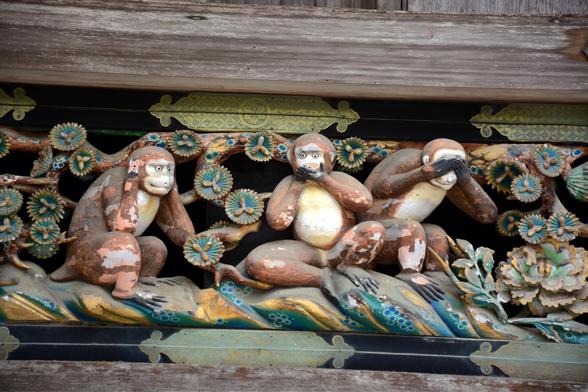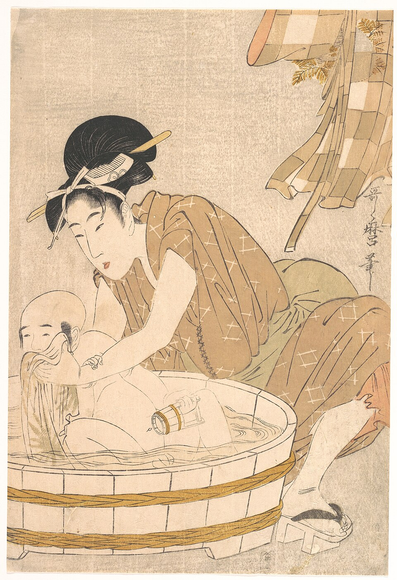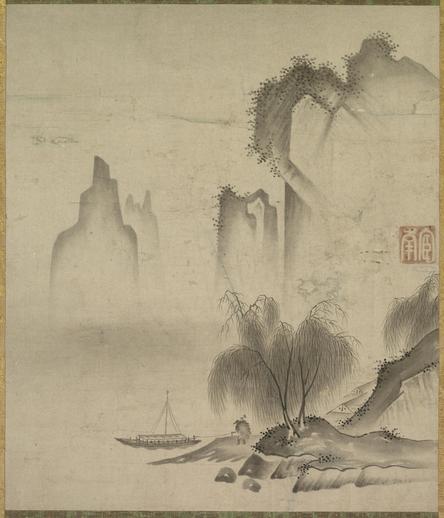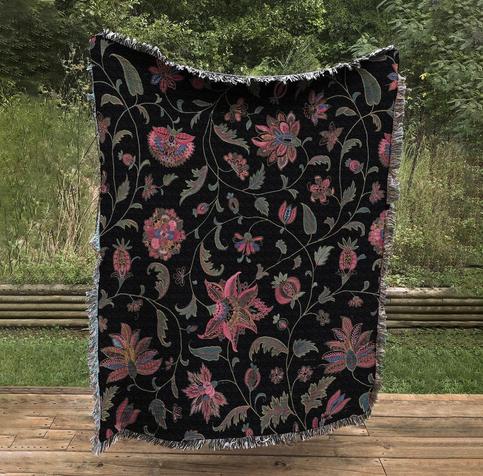"Woman with Morning Glories," Katsushika Ōi, c. 1820s.
Katsushika (c. 1800 - c. 1866) was the daughter of the great Hokusai, by his second wife, but also an accomplished artist in her own right.
Not a lot about her life is known for sure, except she was her father's apprentice and assistant, and married another artist...but divorced him three years later. She moved back in with her father and never remarried, the two of them always busy with their art.
This print is intriguing; at first glance the woman seems to be simpering at the bowl of morning glories (on a tray that absurdly resembles a bathroom scale to modern eyes), but a closer look shows what may be a sheet of paper hidden behind the fan. Is she reading a clandestine letter? A poem from a lover? A naughty print? Who knows?
Sadly, not much of her art is known to survive to this day, but it is known that she was highly regarded in her lifetime. It's possible that some of her work is misattributed to others, including her father. But she remains the object of study and admiration.
Happy Flower Friday!
From the Los Angeles County Museum of Art.
#Art #KasushikaOi #JapaneseArt #AsianArt #ukiyo_e #MorningGlory #WomenArtists #WomenInArt #FlowerFriday
